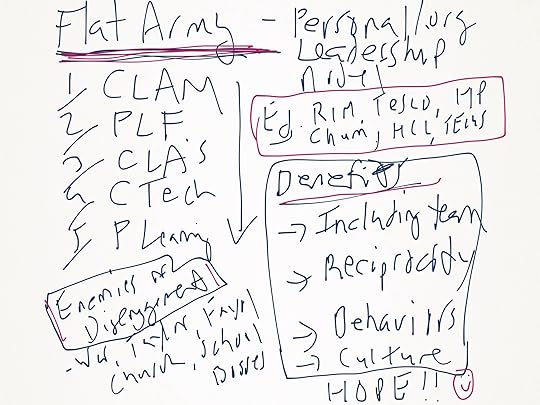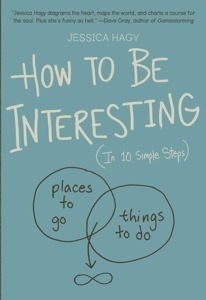Dan Pontefract's Blog, page 44
December 9, 2013
Favourite Posts of 2013 That I Wrote & Published
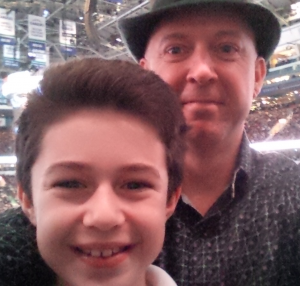 If you haven’t noticed, I’m on a bit of a bender.
If you haven’t noticed, I’m on a bit of a bender.
No, not that kind … although it is Christmas Scotchalicious season.
I’m referring to a recent post where I highlighted many interesting articles and posts in 2013 that I read … and another post where I highlighted several long-form books I found to be quite intriguing.
This post turns the mirror toward my own writing in 2013.
The following are what I deem my most interesting posts (on this site — not published elsewhere or excerpts from my book Flat Army) in 2013.
There were no judges.
Mostly because I couldn’t coax any of the three goats (Claire, Cole and Cate) to read any of my gibberish.
The TED of all Leadership Management Conferences – A Review of the Drucker Forum 2013
I had the fortune of participating in the Global Peter Drucker Forum in 2013 and this post takes you through some of the highlights — at least from my vantage point.
After Five Years In My Role We’re Hiring My Replacement. Are You Interested?
I thought it to be somewhat innovative to announce my new role and retirement from the old role at TELUS through my blog. After more than 6,000 views of the post, perhaps people out there felt the same?
A Review of SAP Jam
I’m a big fan of SAP Jam — and yes, for transparency purposes we implemented it at TELUS — so this post captures what I like about it … and what my friend Sameer Patel needs to do with it in the future.
Is Facebook a Narcissistic Walled Garden?
An open question really. The comments (totaling 18 at press time) were more entertaining perhaps than the post itself.
Should Employees Schedule Time To Be Social?
Yes.
Lessons in Leadership From Jim Balsillie and Mike Lazaridis
Need we say more? (oh, you don’t know who these two chaps are? former co-CEO’s of Research in Motion — now BlackBerry — perhaps could have done things somewhat differently)
Apparently, Organizational Culture is Crap
One of those posts that I didn’t expect huge traffic from, but it now sits at over 10,000 views.
Employee Engagement is Still Poor but it Does Drive Bottom Line Results
In case you fell off a turnip truck and hit your head, I have a particular disdain for disengagement in an organization and equal rage when people scoff at employee engagement and suggest it doesn’t have a bottom line impact.
42-24 … I’m 42 Today: What I’d Say to a 24 Year Old Me
18-year-old hindsight … although an 18 year-old Scotch might have been better
Our Three Young Children Blog … Here’s Why
For those that wonder why we have a 10, 8 and 6 year-old publicly blogging
The Star Wars Mentoring Program
I’m a Star Wars fan … don’t judge
Did I Just Spam My Entire LinkedIn Network?
Someone freaked out on me because I sent one email to my entire LinkedIn network asking for their assistance with the launch of my book. So, I responded. (and in the end, I think he unfollowed me everywhere)
Flexible Working Works
There should be no more debate Yahoo! or HP or Best Buy …. flexible working works. Period.
I’m Not Scared of Email; I Developed a System called DADDIO
A system I devised to help with the onslaught of electronic mail. Luis Suarez would be so proud.
Should Companies Allow Facebook at Work?
Yes.
5 Use Cases for a Corporate YouTube in Organizations
Don’t get me started.
Autotelic: The Word of 2013
A tradition I started several years ago.
There you have it. The selected list of formidable posts from this site in 2013 — curated and selected by yours truly — that might help you in your life, work or working life.
Thanks again for dropping by. Even though there isn’t a lot of commenting going on, at least I know you’re lurking.
209 total views, 205 views today
Dan's Related Posts:You Will Never Be PromotedInterlocutors of 2012 (the goats are better for it)Our Three Young Children Blog … Here’s Why40% of the search traffic to danpontefract.com is because of the term…Is Facebook a Narcissistic Walled Garden?
December 4, 2013
Favourite Books of 2013 That I Read
As it turns out I like to eat Pecan Pie as well, but that’s not why you’re here.
In a previous post this week I outlined a compendium of articles and write-ups from 2013 that I thought were truly brain candy for a cerebral Canadian like me.
This particular entry focuses on literary works (aka. Books – remember those?) that are longer than a post or article.
In no particular order, these are the books I read in 2013 that caught my attention:
Present Shock: When Everything Happens Now by Douglas Rushkoff
Written within the lens of a futurist who laments some of today’s technology and social inanities, Rushkoff reveals his disdain for a world that has all gone behaviorally Type A through his self described pillars of the Narrative Collapse (the lose of stories and longer thoughts in general), Digiphrenia (multiple technologies being used in multiple places), Overwinding (compacting services, goods, thoughts, etc. into one), Fractalnoia (the connection of things), and Apocalypto (self explanatory really).
This was not an easy read, but it went deep into the psyche of our society and its fixation on impulses, distractedness, attention span disorder or deficits in parallel with the rising tide of technology interruptions and advances. In other words, I couldn’t put it down because it was so fascinating and poignant.
Disrupt! Think Epic. Be Epic. by Bill Jensen
I can honestly say it is an ‘epic’ book. I didn’t do as he suggests and pick habits at will, I read Bill’s book back to front to see if it made a difference. (and to be a disruptive reader) I don’t think it did, which I suppose is a testament to what he has crafted. Bill might have coined this book “I’m a Master Curator of Listening: Here are 25 Epic Habits For You To Be Disruptive and Successful”. What the book provides is story after story, anecdote after anecdote, and example after example of people doing their thing in a world gone mad … sorry, disruptive.
Page after page is filled with the thoughts of people Bill has listened to, whilst curating and crafting his 25 Successful Habits. It’s unlike a book I’ve read before in that there is probably more external quotes than internal writing. That is not to say Bill’s thoughts aren’t in the book. On the contrary indeed, Bill has done such a fantastic job at listening and then curating, it’s a marvelous example of Habit 23 “Your Power is Your Network” and Habit 25 “It’s Not About You”.
On Managing Yourself by Harvard Business Review
Ok, it’s not really a book rather a collection of eleven articles across some twenty years from the likes of Peter Drucker, Clay Christensen, Daniel Goleman, Robert Kaplan and Diane Coutu. My favourite pieces were Managing Oneself by Peter F. Drucker, Management Time: Who’s Got the Monkey? by William Oncken, Jr., and Donald L. Wass, How Resilience Works by Diane L. Coutu, What to Ask the Person in the Mirror by Robert S. Kaplan, Primal Leadership: The Hidden Driver of Great Performance by Daniel Goleman and the bonus article How Will You Measure Your Life? by Clay Christensen.
It was nice to have these articles in one spot, particularly during some of my research for the “It’s Work Not Jail” book project.
Adapt: Why Success Always Starts With Failure by Tim Harford
Adapt isn’t a light read nor is it for the faint of heart but it straps you in on a roller coaster of complexity based observations — be it individual, organizational or societal — stopping from time to time to provide potential remedies and future-proof solutions. He takes you to the Galápagos, Netflix, Liberia, CAFE, Google, Royal Air Force, US Military, Baghdad amongst countless other places, references and anecdotes illustrating with zeal and precision why we over complicate our lives and processes. His ultimate point lies in a lack of courage and risk taking for the ‘trial and error’ approach to solving many of today’s problems. Problems that, ironically, we develop with perfect complexity.
Beyond Certainty: The Changing Worlds of Organisations by Charles Handy
Alongside Peter Drucker, Handy should be considered a workplace change pioneer and visionary. The mindset of hierarchical thinking for the sake of hierarchy structures is something Handy has written about for years. Seeing as he was keynoting at the Global Peter Drucker Forum 2013 I took the opportunity to re-read Beyond Certainty before hearing from him live and in person for the first time in my own life. (Sidebar, I received a signed copy of the book from Charles as well while at the Forum – what a thrill)
Why I like this particular book is that it’s a collection of essays written over several years where he delves into his thoughts on a ‘flatter’ organization where workers employ themselves in several positions over time (versus a singular job and which he coined ‘portfolio people’) learning and gaining experience along the journey. He sees the organization becoming more federal in operation than hierarchical. If you’ve never read Beyond Certainty, it’s time for you to remedy that oversight.
Igniting the Invisible Tribe: Designing An Organization That Doesn’t Suck by Josh Allan Dykstra
Josh provides us with a conversation in leadership and organizational change in this 272 page book. I use the word ‘conversation’ because that’s how it felt when I read the book. It felt as though Josh and I were having a conversation … one that intends to shake up the way work works. He builds his thesis around five key sections: New Answers; New World; New Problems; New Rules; and New Tools. At the end of many sections, Josh provides what he calls an “Ignition Point” – helpful workplace questions we must ask of ourselves and of our organizations.
The book is a quick read (at least for me) with comments and thoughts that run parallel to Flat Army. One of my favourite passages is: This lack of hierarchy will be difficult for most of us. We’ve been thoroughly conditioned to only think in competitive terminology. But like so many items from the reductionist “old world”, this is a zero-sum game – one person wins only when someone else loses. We no longer have to work this way, and frankly, this mindset has reached its limit in terms of productivity. The emerging economy demands that we re-think the way we structure, and language is a perfect tool to help us get started.
How To Be Interesting (In 10 Simple Steps) by Jessica Hagy
Jessica’s tact in this very intriguing book is to mix short, specific sentences — often witty, always pertinent, sometimes provocative — with touching, comedic and thoughtful graphics, alongside some larger size bumper sticker-esque slogans in an attempt to persuade you to be more interesting. It’s doodling life lessons.
The book was full not only of sage advice but of a-ha moments. I thought I might already be performing many of her suggestions so perhaps it was more of a needed affirmation due to the past few years of tough change management actions I’ve encountered and initiated both personally and professionally. It’s not only a wise piece of prose, it’s got gumption. It’s got punch. It makes you think. It inspires you to think differently. That’s what a good book should deliver. It needs to make you do things differently. It at least needs to be contemplative.
The Good Life: What Makes a Life Worth Living by Hugh Mackay
I suppose in preparation (and research) for my next book, I read Hugh’s brilliant take on what I might call a purposeful life and was with him every step of the way. He starts off by stating the book is not “about how to feel good, how to find happiness or how to reap some reward for your goodness” rather if we mindful humans “set out to be good or to do good because of what’s in it for you, then you’ll have missed the whole point of the journey.” He had me hooked from the very first page.
The Chapter titles give away his thesis rather well, including 1 The Utopia complex, 2 How the pursuit of happiness can make you miserable, 3 Seven false leads, 4 A good life or a good time?, 5 Do unto others, 6 Living the good life and 7 A good death. Mackay’s The Good Life is as profound as it is accurate, and it was a timely read for my next book. He concludes with, “You need only to treat people with kindness, compassion and respect, knowing they will have been enriched by their encounters with you.” #loveit
The Power of Habit: Why We Do What We Do in Life and Business by Charles Duhigg
I liked Charles’ book for two reasons. One, he situated the reader through vivid storytelling. I’m a big Rosa Parks fan and was delighted to come across this story in the book. The introductory story of Eugene Pauly was also fabulous. The second reason I liked the book was it was cut into three key ‘habits’ sections, namely individuals, organizations and societies. In other words, there was a little bit for everyone, no matter where your interests lie with respect to the formation of habits.
I even reached out to Charles via electronic mail (per his website, where he guarantees a response) and lo and behold, Charles responded. He truly puts his habitual behaviours where his writing is.
Out Think: How Innovative Leaders Drive Exceptional Outcomes by Shawn Hunter
Is it cliché to say Out Think got me thinking? The link between fantastic leadership and innovation is (somewhat) undeniable but Shawn has effectively crystallized the behaviours required of leaders to actually improve levels of innovation in an organization. He aims to change the current mindset of the singular owner of ideas and innovation. As he states, “Creativity, mental flexibility, and collaboration have displaced one-dimensional intelligence and isolated determination as core ingredients of competitive advantage. But these methods and mindsets needed to drive innovation are only found by tapping into the discretionary levels of passion, creativity and initiative within us.”
As someone who truly believes in the collaborative organization as a way in which to ‘get good things done’, Shawn exemplifies my own tendencies to change leadership practices but does so in a quest to also improve the level of creativity and output of the organization itself. I loved how he incorporated the behaviour terms ‘marketquake’ as well as ‘mash-up’ in a couple of his chapters — in putting forth a solid argument that we need to rethink how we are treating the term and action of innovation.
In an interesting bit of author trivia, Shawn and I shared the same publisher and editor.
Accelerating Leadership Development: Practical Solutions For Building Your Organization’s Potential by Jocelyn Berard
Jocelyn is Vice-President Leadership and Business Solutions, International at Global Knowledge and this particular book is part Global Knowledge insight and part storytelling of Jocelyn. Drawing upon interactions, interviews and research with clients, alongside Jocelyn’s expertise and experience from his multifaceted career, the book aims to solve the riddle of actually developing leaders into high performing (and high potential) employees of tomorrow. The book begins with something called the Business Performance Framework — a model that effectively grounds the reader into the books three main parts: leadership and succession, leadership in action and leadership best practices.
The book is deep, running 291 pages, and it doesn’t skim on thoughts and opinions of leaders across many different verticals whether it’s Jack Kitts, CEO of The Ottawa Hospital, Colleen Johnston, CFO at TD Bank, or John Duncan, HR Director at Royal Mail. My favourite model was the Priority Quadrant from Chapter 12 which was built to help leaders determine “whether a particular task is urgent or important” through the quadrants of eliminate, delegate, plan to do (or delegate) and do. It was simple and something I plan on using personally going forward. Accelerating Leadership Development is a guide more than it’s a book, something you can refer to several times. You may want to utilize it in your organization’s leadership development programs if you’re interested in changing the way you actually are developing leaders.
In an interesting bit of author trivia, Jocelyn and I also shared the same publisher and editor.
Awaken Your Authentic Leadership: Lead with Inner Clarity and Purpose by Tana Heminsley
One of my favourite parts of Tana’s book surfaced on page 15, “The Four C’s of an Authentic Leader”. Maybe that’s because I use the letter C in the 6 C’s of the Collaborative Leader Action Model (CLAM) in Flat Army … or perhaps because Denise and I named our three goats with the letter C … or perhaps it’s simply due to the fact it’s ‘authentic’. I know, too much. The four C’s of Tana’s Authentic Leader model are clear, choiceful (yes, she created a new word), consistent and caring. Later on in Chapter 8, Tana defines the Authentic You Personal Planning System — a nine step system that “can be used annually or whenever it feels like time to step back and reflect” such that you are taking very specific and personal actions such as ‘articulating your values’, assessing your work-life balance, setting your goals and creating an inner development plan in an attempt to gain balance back in your life. It’s a self-reflection book as well as an action-intensive discovery book. There are, for example, 63 pages of action worksheets found at the end of the book, which align to the Authentic You Personal Planning System detailed in the book itself. It really is a personal journey book, aiding you along the way of self-improvement.
The Lens of Leadership: Being The Leader Others Want To Follow by Cory Bouck
Cory is a fascinating character. With a military background as a Naval Flight Officer, coupled by years of instructing leadership at the U.S. Naval Academy massaged by corporate roles at General Mills, Rubbermaid and now Johnsonville Sausage as the Director of Organizational Development and Learning, he can draw on his many experiences to deliver his overarching thesis in this book … serve, build and inspire.
The ‘Serve’ section focuses on the table stakes of leadership. How do you give away your power? How do you embody integrity? What is nobility? I loved his story about SERE – survival, evasion, resistance and escape from the prisoner-of-war training. The ‘Build’ section delves into behaviours such as teaching, conversations, networking and change management. And finally, the ‘Inspire’ section was -as you guessed it – about inspiring and motivating your team and the organization. My affinity for the book and the ‘serve, build and inspire’ model stems from its unique parallels to the Connected Leader Attributes of Flat Army — where I believe we have the roots in the ground, the trunk of a tree and the foliage above that represents metaphorically a great leader. Cory’s three sections made that same connection for me.
Thinking, Fast and Slow by Daniel Kahneman
It’s hard to beat the intelligence, insight and research of a Nobel Prize Winner like Daniel Kahneman … and Thinking, Fast and Slow places this rare thinker and cultural anthropologist (disguised as a psychologist) in a league of his own. Based on the many studies and conversations with his now deceased colleague Amos Tversky, this book is as much an entertaining ride through the annals of humanity as it is his relationship with Tversky, where Kahneman says, “The pleasure we found in working together made us exceptionally patient; it is much easier to strive for perfection when you are never bored.“
The running theme of System 1 and System 2 — and when one system is triggered over another — was fascinating. Who is in charge? System 1 or System 2? It’s an exploration around our decision making, aided and abetted by countless examples, experiments and citations. If you’re into research and knowing more about the ‘why’ of our human make-up, this book is an absolute must.
I read a few more in 2013 (and re-read or skim read several others) but I won’t bore you with the details in this space.
You can take me out for a beer one day if you like. Happy to share.
540 total views, 146 views today
Dan's Related Posts:the FLAT ARMY cheat sheetA Review of “How To Be Interesting” While Sitting Beside a Drunk on an…WHY I Wrote Flat Army: The Flat Army Golden CircleThe 10 Winners of Flat Army Copies Are …The TED of all Leadership Management Conferences – A Review of the Drucker Forum…
December 2, 2013
Favourite Posts and Articles of 2013 That I Read
 There are a lot of uber smart people out there. It’s a collective intelligence of infinite proportions. Without their vast and often timely contributions, I personally would be left fumbling for answers.
There are a lot of uber smart people out there. It’s a collective intelligence of infinite proportions. Without their vast and often timely contributions, I personally would be left fumbling for answers.
The trips as a wee child to the massive toy store — where I could peruse for hours the array of colourful boxes and bins yearning for my attention and my parent’s wallet — reminds me of those internet enabled humans willingly writing posts and articles for the enjoyment (and learning) of all.
I don’t know about you, but I’m a kid at the toy store each and every day as I stumble down the aisles of the internet playing with toys masked as articles and posts, thinking to myself, “Which one can I bring home and use in my life forever?”
Which is to say I was struck by many pieces of thought leadership in 2013, but the ones outlined below in particular are the toys I played with more than once and that brought a smile to my face whether as a formal published article or as a blog post.
Thank you to all for your contributions to society’s ongoing collective intelligence.
Farewell Guru, Hello Awesome by Jonathan Anthony
How To Break Through a Career Impasse by Herminia Ibarra
Technology and corporate culture: a combination that can drive bottom line results by Marc Jadoul
Collaborate to Grow Says Deloitte Global CEO Barry Salzberg by Bruce Rogers
Hierarchy is Overrated by Tim Kastelle
8 steps to promoting collaboration in your company by Joanne Graf
Six Drucker Questions that Simplify a Complex Age by Rick Wartzman
Social apps reintroduce personality at work by Valentina Craft
Networks are the new companies by Harold Jarche
Leading in complex times by Lynda Gratton
The Sound of Social Business by Celine Schillinger
Organizational Heartbeat by Jean Russell
Did Ronald Coase Get Economics Wrong? by Steve Denning
Culture, Collaboration and Nerd Confessions by Jillian Walker
Consulting on the Cusp of Disruption by Clay Christensen et al
The Constant Customer by JP Rangaswami
The Two Choices to Make in Strategy by Roger Martin (video)
Leadership in enterprise technology must come from all organizational functions by Ross Dawson
Why Do Only 7% Of Managers Consider Social Media Skills Important For Employees? by Dan Schawbel
Social Business Held Back by Corporate Culture, Not Technology by David Roe
Time to Join the Work Revolution by Stowe Boyd
From Sewing to Analyzing: The Historical Shift in Urban Work by Richard Florida
Three lessons about talent from Tibetan Buddhist monks by John Hagel III
Command and control leadership doesn’t cut it anymore by Jim Fisher and Rose Patten
Want to Change Culture? Do Not Start A Culture Change Project! by Eugen Oetringer
Social Business Needs Culture Of Open Leadership by Kristen Corpolongo
Douglas Engelbart’s Unfinished Revolution by Howard Rheingold
How Corporate Culture Drives Competitive Advantage by Tim Clark
Are You Leading Like It’s 1980? by Susan Cramm
The Unbearable Wearable: Google Glass is Brilliant, Loathsome and Not Inevitable (or “Take Those off before I Punch You in the Face!”) by Jason Calacanis
Social Networking in the 1600′s by Tom Standage
“Perhaps Culture is Now the Counterculture” A Defense of the Humanities by Leon Wieseltier
If you’re trying to change how your company works, you probably won’t by John Stepper
The Management Revolution That’s Already Happening by Steve Denning
The Internet is an energy management system by Euan Semple
We’re Living Through A Rare Economic Transformation by Charles Hugh-Smith
The Decline but Not Fall of Hierarchy — What Young People Really Want by Karl Moore
Givers take all: The hidden dimension of corporate culture by Adam Grant
What Organizations Really Need To Succeed And Thrive by Tanveer Naseer
The Kids Are Not Alright. Stop Measuring Them All the Time by Jonathan Fowler and Elizabeth Rodd
I hope you continue writing in 2014.
Coming next, my favourite books.
436 total views, 71 views today
Dan's Related Posts:Steve Denning Nails It on Forbes: Paradigm Shift in Leadership and ManagementI Detached on Holiday. I Didn’t Unplug. You Should Too.Future of Work: Add Open Leadership, Enterprise 2.0, Connected Learning and MixIt’s Time to Revolutionize Corporate LearningAfter Five Years In My Role We’re Hiring My Replacement. Are You Interested?
November 18, 2013
The TED of all Leadership Management Conferences – A Review of the Drucker Forum 2013
 Once in a while, you get inspired by events in your life that seem to be a precursor to real societal change. A hopeful change. A needed change. An evolutionary change.
Once in a while, you get inspired by events in your life that seem to be a precursor to real societal change. A hopeful change. A needed change. An evolutionary change.
The Drucker Forum 2013 edition that was recently held in Vienna, Austria –14 and 15, November — was one of those moments for me.
Over the course of two action packed days and nights, I left feeling not only inspired but personally validated — we might even suggest vindicated — that there is sufficient wind in our change sails to affect the desperately needed improvements in leadership and management practices that engulf our organizations across the globe.
Think of the following words as but a snapshot of the intellectual neurons that fired throughout the glorious Federation of Austrian Industries building that housed the event in central Vienna.
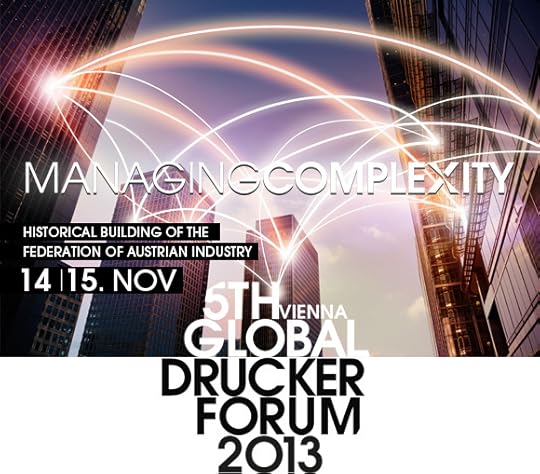 The conference theme was entitled
“Managing Complexity”
yet I don’t think it did justice to the presentations, banter and discussions that transpired. It might have been coined “Inspiring a Sense of Purpose”. We can thank Charles Handy for that. He helped kick off the conference with a cutting observation that set the tone for almost all interactions thereafter. He remarked early on in his keynote,
“People, profit and passion. They’re all important but so too is the order.”
(And he wasn’t referring to profit being number one) Needless to say, he had me at hello. He also made a sharp observation about helicopter parenting suggesting it doesn’t work at home, so don’t expect it to work in the organization. It inhibits trust and the center will ultimately fight back. Not only did he accept a copy of Flat Army from me, he signed a copy of his book Beyond Certainty for me as well.
“Purpose before profit,”
as Handy told us, is akin to my own personal mantra of
“we’re not here to see through each other; we’re here to see each other through.”
The conference theme was entitled
“Managing Complexity”
yet I don’t think it did justice to the presentations, banter and discussions that transpired. It might have been coined “Inspiring a Sense of Purpose”. We can thank Charles Handy for that. He helped kick off the conference with a cutting observation that set the tone for almost all interactions thereafter. He remarked early on in his keynote,
“People, profit and passion. They’re all important but so too is the order.”
(And he wasn’t referring to profit being number one) Needless to say, he had me at hello. He also made a sharp observation about helicopter parenting suggesting it doesn’t work at home, so don’t expect it to work in the organization. It inhibits trust and the center will ultimately fight back. Not only did he accept a copy of Flat Army from me, he signed a copy of his book Beyond Certainty for me as well.
“Purpose before profit,”
as Handy told us, is akin to my own personal mantra of
“we’re not here to see through each other; we’re here to see each other through.”
What an absolute thrill for someone like me to be inspired, yet again, by this Thinkers 50 Hall of Fame member. You shouldn’t be surprised then that the word “purpose” was recanted over and over again during the conference. It also had personal relevance to me as the follow-up book to Flat Army (It’s Work Not Jail) contains considerable weight towards the concept of a ‘career with purpose’. In the end, I gave Charles a big hug on behalf of civilization. I believe he used the word “nutter” to describe me.
 Another highlight was finally getting to meet John Hagel and to hear him rip into the inane way we treat organizational culture and workplace design. I’ve been an admirer of his groundbreaking work for years — read anything he and/or his Deloitte Center for the Edge colleagues have written — so to shake his hand was a bit like my Dad meeting John Lennon. To hear him provocatively cut through the malaise that is today’s organization in his 15 minute soliloquy, channeling the audience to remember “organizational complexity isn’t going away, in fact it’s increasing in a linear world full of non-linear needs and actions” was sublime. John further argued that our organizations are institutions, made for the purpose of institutional innovation not modern-day innovation and that they operate today (as they have done for decades) as models of uber efficiency. He doesn’t believe there is room for innovation in today’s organizational model — no room for tinkering he says — thus we need to redesign the work environment to create what he calls “scalable learning”.
Another highlight was finally getting to meet John Hagel and to hear him rip into the inane way we treat organizational culture and workplace design. I’ve been an admirer of his groundbreaking work for years — read anything he and/or his Deloitte Center for the Edge colleagues have written — so to shake his hand was a bit like my Dad meeting John Lennon. To hear him provocatively cut through the malaise that is today’s organization in his 15 minute soliloquy, channeling the audience to remember “organizational complexity isn’t going away, in fact it’s increasing in a linear world full of non-linear needs and actions” was sublime. John further argued that our organizations are institutions, made for the purpose of institutional innovation not modern-day innovation and that they operate today (as they have done for decades) as models of uber efficiency. He doesn’t believe there is room for innovation in today’s organizational model — no room for tinkering he says — thus we need to redesign the work environment to create what he calls “scalable learning”.
John summoned inspiration from Bill Joy who once said, “No matter how many smart people in your organization, there are a lot more outside of it.” If only 11% of employees are passionate about their work, ‘scalable learning’ can instill this sense of passion to drive innovation and creativity. It can drive risk taking. He wants us to shift from scalable institutional efficiency to scalable learning. In other words, the reprehensible way in which organizations are currently designed (and I argue leadership is leading) exacerbates this innovation malaise. The current design of the organization, therefore, is causing an unnatural complexity in an age that needs stimulation and simplicity. John stuck around the entire conference as well, taking in all of the sessions proving he is a genuine lifelong scalable learner and not some hoity toity American strategist.
 Tammy Erickson offered a sage piece of advice when she said, “So much of what we do today, what we learn, is based on discovery.” She went on to suggest leaders should help employees “build networks, providing a paradigm for questioning” and “to get people out of the classroom” further advocating that leaders should be providing time and guidance to let everyone connect and to network. It gave credence to the earlier points brought up by Handy and Hagel. I gave Tammy a copy of Flat Army letting her know employee engagement at TELUS now sat at 83%, up considerably from the time we brought her in to speak to TELUS leaders in 2009. Needless to say she was delighted to know of the improvement. I mentioned to her the talk reminded me of Chapter 7 — The Participative Leader Framework — where leaders must demonstrate CARE (continuous, authentic, reciprocal and educating) in an aim to build networks and knowledge. She smiled and said she looked forward to reviewing the book. A for awesome.
Tammy Erickson offered a sage piece of advice when she said, “So much of what we do today, what we learn, is based on discovery.” She went on to suggest leaders should help employees “build networks, providing a paradigm for questioning” and “to get people out of the classroom” further advocating that leaders should be providing time and guidance to let everyone connect and to network. It gave credence to the earlier points brought up by Handy and Hagel. I gave Tammy a copy of Flat Army letting her know employee engagement at TELUS now sat at 83%, up considerably from the time we brought her in to speak to TELUS leaders in 2009. Needless to say she was delighted to know of the improvement. I mentioned to her the talk reminded me of Chapter 7 — The Participative Leader Framework — where leaders must demonstrate CARE (continuous, authentic, reciprocal and educating) in an aim to build networks and knowledge. She smiled and said she looked forward to reviewing the book. A for awesome.
A couple of other talks stood out for me as well, although that may be as a result of my Canadian passport. There’s nothing wrong with national nepotism when one is glowingly referring and referring to Roger Martin and Don Tapscott (numbers 3 and 4 on the 2013 version of the Thinkers 50 list) while being 8000 kilometers from home. After all, Canada is the reigning Gold Medal Olympic Champion for both women’s and men’s ice hockey and we’re slowly getting better at demonstrating pride in a more public way. Congratulations Roger and Don on your ranking.
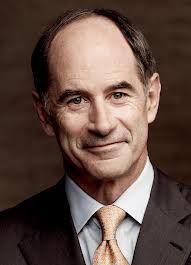 Roger’s take on complexity was spot on. He doesn’t believe the world is getting more complex, per se, rather our organizations are simply ill-equipped to handle the transformation away from deep-rooted silos. He called our somewhat pervasive organizational system of fiefdoms as “inter-domain complexity.” It’s this siloed nature of working and operating that is causing the complexity in the first place. He wants us to push for a meta-domain; the integration of knowledge across all domains thus removing the inhibitors of what I personally call ‘organizational stovepipes’. His aspiration is for future leaders to have the ability to be integrative thinkers and that it actually begins in academic circles. It reminded me of my TEDxTalk from a few years ago when I had the audience chanting, “tear down these walls”. Needless to say I was smitten by his overarching thesis.
Roger’s take on complexity was spot on. He doesn’t believe the world is getting more complex, per se, rather our organizations are simply ill-equipped to handle the transformation away from deep-rooted silos. He called our somewhat pervasive organizational system of fiefdoms as “inter-domain complexity.” It’s this siloed nature of working and operating that is causing the complexity in the first place. He wants us to push for a meta-domain; the integration of knowledge across all domains thus removing the inhibitors of what I personally call ‘organizational stovepipes’. His aspiration is for future leaders to have the ability to be integrative thinkers and that it actually begins in academic circles. It reminded me of my TEDxTalk from a few years ago when I had the audience chanting, “tear down these walls”. Needless to say I was smitten by his overarching thesis.
Roger’s Toronto neighbour — the digital futurist and author of what seems like 100 books, Don Tapscott — took a slightly different approach to complexity. He believes complexity is reduced when multi-stakeholder networks are increased and improved upon. Don coins this “Global Solution Networks”. There are ten different types which include:
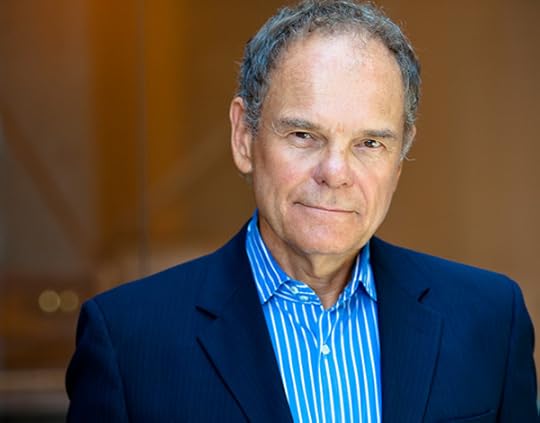 Knowledge Networks (Wikipedia, TED Talks, Galaxy Zoo)
Knowledge Networks (Wikipedia, TED Talks, Galaxy Zoo)Operational Delivery Networks (Kiva)
Policy Networks (International Competition Network)
Advocacy Networks (Avaaz, Kony, Invisible Children)
Watchdog Networks (Sunlight Foundation)
Platforms (Ushahidi, Sojo)
Global Standards Networks (W3C, Global Footprint Network)
Governance Networks (ICANN)
Network Institutions (WEF)
Diasporas (onevietnam.org)
Concluding with video footage of starling birds filmed in England — who self form a vast ever-changing network when in the air to protect themselves from predators and the elements — Don emphasized that as we have shifted from feudalism to the printing press to capitalism to the internet to the age of networked intelligence, we can seek out less complex organizations through the power of the Don defined “Global Solution Networks”. He concluded with an absolutely brilliant anecdote, “The future is not something to be predicted. It is something to be achieved.”
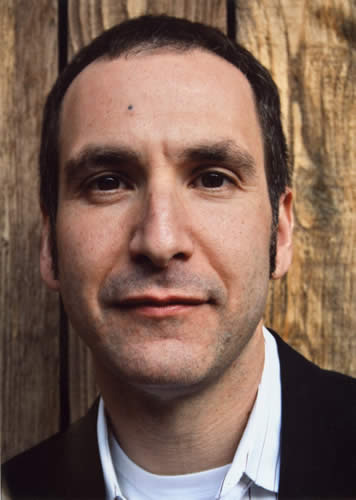 The final session of the Forum was entitled “What Would Drucker Say Now?”. To be frank, while reviewing the agenda in detail on the airplane odyssey between Vancouver and Vienna I thought this might be some strange form of worship with Drucker appearing as a shimmering larger than life sized hologram as audience members and panelists paid homage with chants in unison of “let’s increase the productivity of knowledge work and the knowledge workers”. Thankfully, I was proven wrong. The panel consisted of Rick Wartzman (of the California-based Drucker Institute) and Steve Denning (Washington-based author and Forbes columnist extraordinaire), moderated by Pierre Hessler (the Forum’s chair delegate and senior leader at Cap Gemini). Rick reminded us that Drucker felt the top-down structures in organizations would eventually perish in favour of self-forming teams. Drucker suggested this in … wait for it … 1954. For those paying attention and able to perform rudimentary math, that’s almost 60 years ago begging the question from yours truly, ‘what the hell happened?” Rick later amused the audience by regaling us of the answer Drucker provided a student who asked what it would take to become a better manager to which Drucker replied, “play violin”. Thank God my children are already on the right path.
The final session of the Forum was entitled “What Would Drucker Say Now?”. To be frank, while reviewing the agenda in detail on the airplane odyssey between Vancouver and Vienna I thought this might be some strange form of worship with Drucker appearing as a shimmering larger than life sized hologram as audience members and panelists paid homage with chants in unison of “let’s increase the productivity of knowledge work and the knowledge workers”. Thankfully, I was proven wrong. The panel consisted of Rick Wartzman (of the California-based Drucker Institute) and Steve Denning (Washington-based author and Forbes columnist extraordinaire), moderated by Pierre Hessler (the Forum’s chair delegate and senior leader at Cap Gemini). Rick reminded us that Drucker felt the top-down structures in organizations would eventually perish in favour of self-forming teams. Drucker suggested this in … wait for it … 1954. For those paying attention and able to perform rudimentary math, that’s almost 60 years ago begging the question from yours truly, ‘what the hell happened?” Rick later amused the audience by regaling us of the answer Drucker provided a student who asked what it would take to become a better manager to which Drucker replied, “play violin”. Thank God my children are already on the right path.
 Leave it to Steve Denning though to bring home the underlying subliminal theme to the conference. Steve recalled it was Drucker in 1973 who said “if an organization’s mission is to target profit and not purpose, things will definitively end badly.” The purpose of the organization is to provide purpose for its employees; to provide value for the very people who inhabit the walls of its organizational mission. My only regret is I didn’t get the chance to shake Steve’s hand afterward.
Leave it to Steve Denning though to bring home the underlying subliminal theme to the conference. Steve recalled it was Drucker in 1973 who said “if an organization’s mission is to target profit and not purpose, things will definitively end badly.” The purpose of the organization is to provide purpose for its employees; to provide value for the very people who inhabit the walls of its organizational mission. My only regret is I didn’t get the chance to shake Steve’s hand afterward.
Overall, the 5th Annual Drucker Forum was a wonderful gallop through brain candyland for me. My synapses were constantly firing whether through the affirmation of my way of organizational leadership thinking or through the growth of new ideas and knowledge. This review only skims the surface of speakers, discussions and ideas. The combination of academics, practitioners, authors and rock stars permitted the sessions to be highly relevant for a cerebral Canadian like me. No one keynote was more than 20 minutes, which further fuelled the amount of content that was at the ready. Audience participation through Q&A was prevalent across all sessions. The gala dinner on Thursday night was world-class and I had the fantastic good fortune of sitting next to Thierry Grange of the Grenoble School of Management where he and I gabbed about the state of the world for 60 minutes straight. (Apologies to those sitting next to us)
The networking time was superb, giving ample chance for conference attendees to mix and mingle. I had the chance to not only meet and chat with the likes of Lynda Gratton, Julia Kirby and David Hurst — who I had never met before — it gave me a chance to meet Twitterati folks like Kenneth Mikkelsen and Stelio Versera where our previous relationship respectively had solely been through 140 characters at a time.
My hat is tipped to Drucker Forum chef de mission Richard Straub. He and the entire organizing team did a remarkable job. In 2013 I participated in over 30 separate conference and learning related events and none can match the vibe, talent and knowledge gain that transpired in Vienna. I’ll coin it “the TED of all leadership management conferences”.
See you next year.
Promise.
1,014 total views, 572 views today
Dan's Related Posts:Video Review of Drucker Forum 2013Steve Denning Nails It on Forbes: Paradigm Shift in Leadership and ManagementDrucker Forum – Video Update #1 – Conference OverviewMy Network is my Net Worth – Part IIRethinking the Work of Leadership
Video Review of Drucker Forum 2013
My (video) thoughts on the 5th Annual Global Drucker Forum (2013) held in Vienna, Austria. In a word “excellent” … in a tagline tweet “The Drucker Forum 2013 was the TED of all Leadership Management Conferences #GPDF13″.
237 total views, 102 views today
Dan's Related Posts:Drucker Forum – Video Update #1 – Conference OverviewDrucker Forum – Video Update #2 – Day 1 Morning KeynotesDrucker Forum – Video Update #3 – Day 1 Afternoon/Evening UpdateThe TED of all Leadership Management Conferences – A Review of the Drucker Forum…Flat Army Book Trailer (one minute)
November 15, 2013
Flat Army on the Back of a (Digital) Napkin
When I’m writing material for a book, and specifically when I’m using an iPad, I normally find myself mainly in Evernote typing away … but because I like to sketch things out as well I also spend some time on an app called Bamboo Paper.
Think of the app as a digital sketch pad or whiteboard where you can use your finger or a stylus to draw, doodle or sketch the coolest stick figures ever.
Maybe that’s simply the extent of my artistic abilities, but I digress.
I use Bamboo Paper enough that there are over 150 pages of scribbles, diagrams, word messes and so on.
After a stroll through night-time Vienna, I returned to the hotel and began writing.
Yet again, I found myself in Bamboo Paper scribbling and ideating away when I fell into the procrastination pit — more so now since I’m writing this post instead of a book — and I began scrolling through the various drawings, etc. I made for Flat Army.
Interestingly, I forgot I had mapped out the entire book early on in the writing process … on a single page!
Here it is for your amusement:
268 total views, 91 views today
Dan's Related Posts:I Wrote a 90,000 Word Book Entirely in EvernoteDrucker Forum – Video Update #3 – Day 1 Afternoon/Evening UpdateIn Defense of Alexandra SamuelOur Three Young Children Blog … Here’s WhyOmni Hotels & Resorts in Dallas Demonstrate Great Customer Service
November 14, 2013
Drucker Forum – Video Update #3 – Day 1 Afternoon/Evening Update
Thoughts on the afternoon of Day 1 as well as the nightime gala.
138 total views, 138 views today
Dan's Related Posts:Drucker Forum – Video Update #1 – Conference OverviewDrucker Forum – Video Update #2 – Day 1 Morning KeynotesFlat Army Book Trailer (one minute)Friday Fun: Eat, Drink and Be CreativeFlat Army: Chapter 4 Overview
Drucker Forum – Video Update #2 – Day 1 Morning Keynotes
Your browser does not support the video tag
Some fascinating points over the course of the first morning.
367 total views, 57 views today
Dan's Related Posts:Drucker Forum – Video Update #1 – Conference OverviewDrucker Forum – Video Update #3 – Day 1 Afternoon/Evening UpdateFlat Army Book Trailer (one minute)Flat Army: Chapter 4 OverviewFlat Army: Chapter 1 Overview
November 13, 2013
Drucker Forum – Video Update #1 – Conference Overview
Your browser does not support the video tag
Early morning first thoughts. Overview of the conference.
384 total views, 34 views today
Dan's Related Posts:Drucker Forum – Video Update #2 – Day 1 Morning KeynotesDrucker Forum – Video Update #3 – Day 1 Afternoon/Evening UpdateFlat Army: Chapter 1 OverviewFlat Army: An Overview of the BookFlat Army: Chapter 4 Overview
November 12, 2013
A Review of “How To Be Interesting” While Sitting Beside a Drunk on an Airplane
It wasn’t long into a trip from Vancouver to Washington, DC when my female seatmate asked the flight attendant for a glass of white wine.
Departure time was 9:00am.
AM = ante meridian or as I like to say, “aromatic meritage”.
By 10:00am she was on her third glass and by half past the hour the Chilean Sauvignon Blanc bottle was no more. I asked myself if airlines recycle.
I also wondered if I might have to perform CPR or at least donate my ‘sickness bag’.
But where would I spit out my gum?
Aghast, I ironically suggested to her — after removing my earbuds and pausing Arcade Fire’s Reflektor (“it’s a reflection, of a reflection, of a reflection”, etc.) — that she should try the Italian Pinot Grigio next.
I can’t make this stuff up.
It was at this precise moment that I sought out some inspiration. At least a distraction from the Rob Ford cousin next to me. (Surely, you’ve heard) Perhaps I needed a little break from the constant waving interruption of a bottle being poured. I needed to divert my attention from the saucy tornado guzzling vino lady beside me drinking as if the apocalypse was upon us.
I flipped open the Kobo app on my iPad. There it was. A book I forgot about but knew I had to read. I mean c’mon, if Dave Gray says “she’s funny as hell” I’m in. Besides, there were no empty seats in business class so I was stuck with what’s her name.
Fellow Northwest resident Jessica Hagy and I — she’s in Seattle and I’m in Vancouver, and no she’s not the drunk beside me — have never met, but I’ve always enjoyed lurking around her work, be it Forbes, New York Times or even her blog. She’s quirky, insightful and can tell it like it is in cartoons, pictures, doodles or charts. (Yes, she uses words too …. sometimes)
The prose I’m referring to is “How To Be Interesting (In 10 Simple Steps)” and it’s unlike any book I’ve read before. (Editor’s note: Dan has only read two books – Flat Army and The Giving Tree)
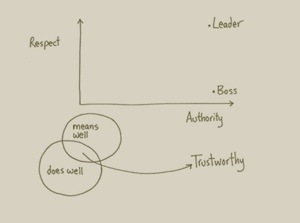
©Jessica Hagy | Workman Publishing Company
First off, it’s light. No, not because I read it as a weightless digital file but because it’s her thoughts and only her thoughts. There are no references whatsoever — no research papers to attribute and nary a single statistic to surface — and there are no stories, quotes or interviews. She wants you to be interesting but if you’re interested in being interesting — see what I did there? — you’ll have to keep interested in her own personal interests of being interesting. (I’ll stop now, but forgive me … the lady beside was a wino whacko)
It is written counter to Flat Army. I have a lot of stats, research bits and stories. I was confused at first, but then I got it.
It’s Jessica. It’s all Jessica.
Her tact is to mix short, specific sentences — often witty, always pertinent, sometimes provocative — with touching, comedic and thoughtful graphics, alongside some larger size bumper sticker-esque slogans in an attempt to persuade you to be — wait for it — more interesting.
It’s doodling life lessons.
She never once used, “don’t worry, be happy” either.
That got points from the Bobby McFerrin hate club. (Editor’s note: Dan loves a cappella)
Her plotline focused on ten simple steps. They are:
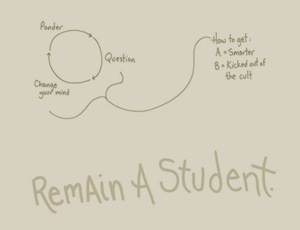
©Jessica Hagy | Workman Publishing Company
1) Go Exploring
2) Share What You Discover
3) Do Something, Anything
4) Embrace Your Weirdness (Editor’s note: she had Dan at embrace)
5) Have a Cause
6) Minimize The Swagger (Editor’s note: I think she hates the Fonz)
7) Give It a Shot
8) Hop Off the Bandwagon
9) Grow a Pair (Editor’s note: ummm …)
10) Ignore the Scolds
I read her book in about 45 minutes. It was the same amount of time it took my seatmate to ingest the rest of the Pinot Grigio bottle, but hey, who’s counting? (Editor’s note: that’s two bottles in 135 minutes)
Truthfully and in all seriousness, I loved “How To Be Interesting“. It was full not only of sage advice but of a-ha moments. I thought I might already be performing many of her suggestions so perhaps it was more of a needed affirmation — not because of my now highly intoxicated seatmate but due to the past few years of tough change management actions I’ve encountered and initiated both personally and professionally.
Her book spoke to me. (Editor’s note: can books speak?)
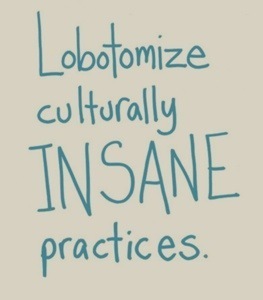
©Jessica Hagy | Workman Publishing Company
It’s not only a wise piece of prose, it’s got gumption. It’s got punch. It makes you think. It inspires you to think differently. It ensures you contemplate singing out loud and not simply by yourself in the shower. (Editors note: don’t sing out loud if you shower with your wife)
That’s what a good book should deliver. It needs to make you do things differently. It at least needs to be contemplative.
Some will scoff. A few will coin it fridge magnet material.
I disagree.
Buy it. At least gift it to someone. (Editor’s note: not Dan, he bought it already)
Nice writing and doodling Jessica. Thank you for putting yourself out there. It was very ‘interesting’. (Editor’s note: just stop)
Is there white wine in the fridge honey? I’ve developed a wine pang for some odd reason.
225 total views, 207 views today
Dan's Related Posts:For every fall there is a spring in our stepVisual Depiction of a Connected and Engaged OrganizationSteve Denning Nails It on Forbes: Paradigm Shift in Leadership and ManagementAnnouncing the Full Book Cover Jacket of Flat ArmyAfter Five Years In My Role We’re Hiring My Replacement. Are You Interested?


